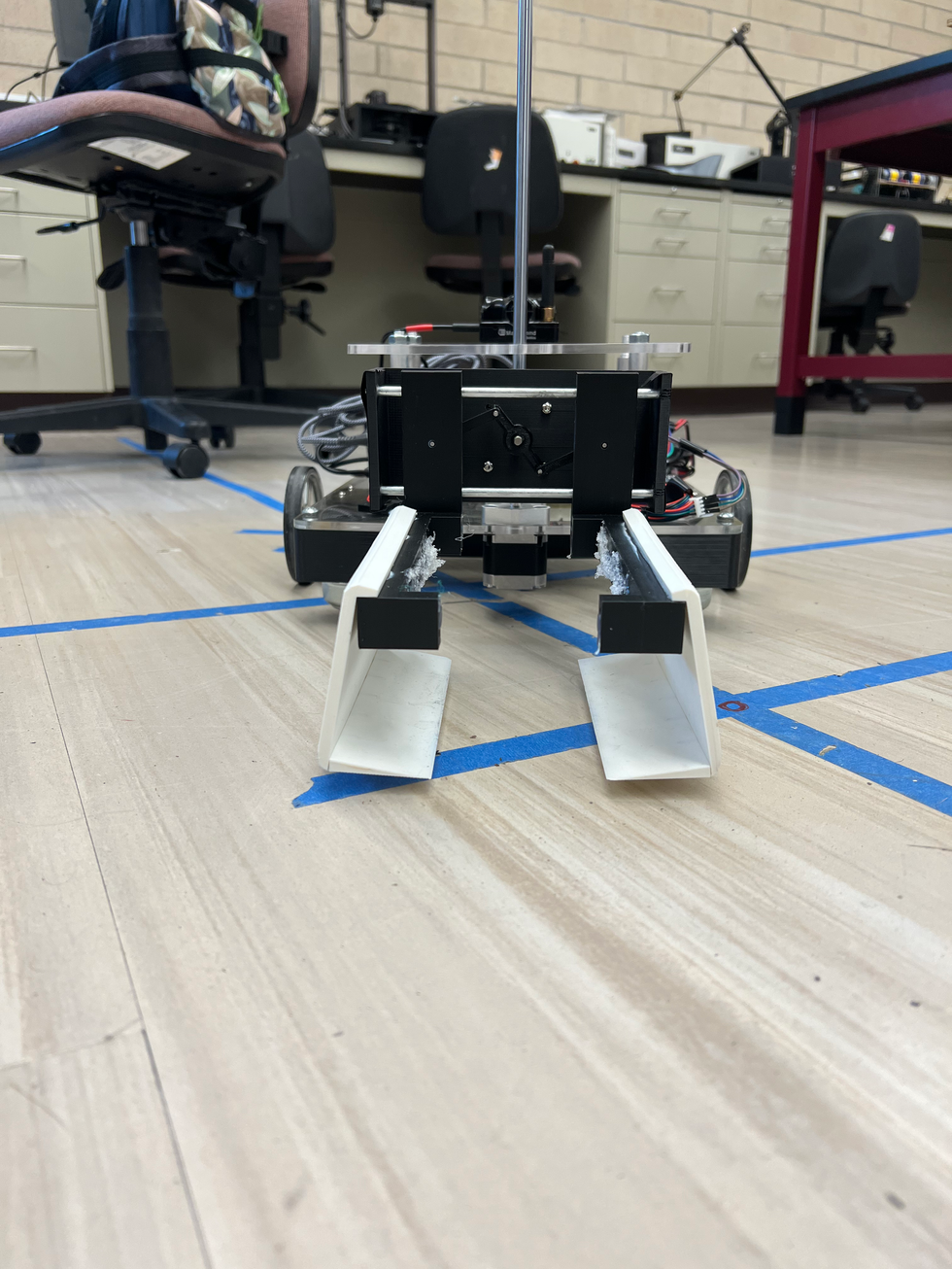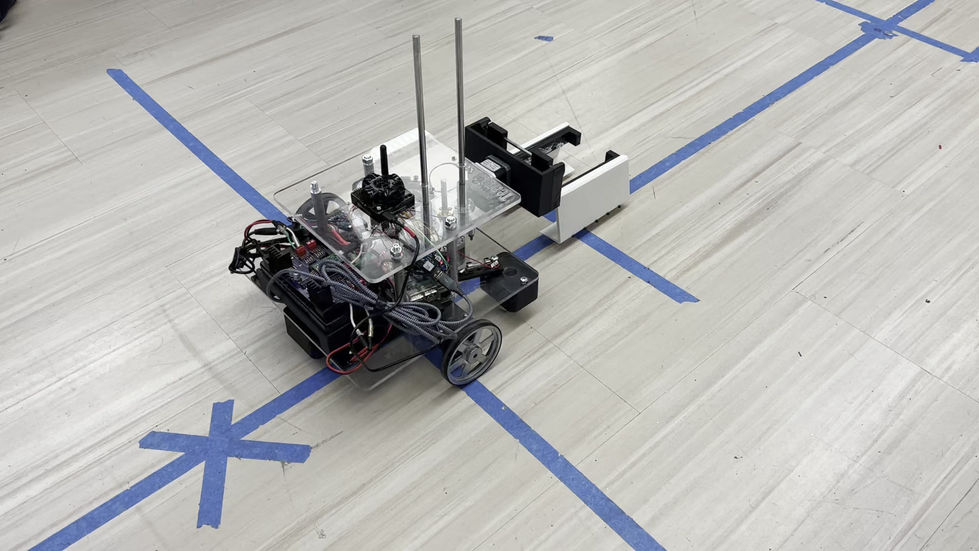Create Your First Project
Start adding your projects to your portfolio. Click on "Manage Projects" to get started
Autonomous Robot
Project Type
Class Project, Integration
Date
January 2022 - June 2022
Location
University of Denver, CO
Team Members
Andrea Francis, Darius Soo Hoo, and Brooks Carrico
Taking medication on time is necessary to make sure the body has an appropriate amount of drugs to make sure one’s disease does not get worse. The goal of this robot is to be able to drive across a specified space, identify, pick up, and deliver medication to a specified location. It should be able to avoid obstacles on its way and lift a box of medicine to deliver it to an assigned location. The functions will be assessed with a catch the flag competition where the robot has to drive, pick-up and carry a flag from the flag zone to the goal area while avoiding obstacles. There will be three levels for the competition. The first level includes manual drive while the second and third level include autonomous drive with the second level having a predefined map. These are the primary goals that drive all decisions made over the course of the robot’s engineering design process. Three conceptual designs were proposed and considered at the beginning of the process. One design was selected as a conceptual design, but major changes were made after further debate and consideration. Through 3D modeling and design matrix analysis, the team has selected the final improved design as the one that would best be suited to achieve those goals.
Impact of Design
The design as constructed completed the first and second level of functionality as described by the project requirements - remote controlled and autonomous control with a map (confirmation mode). The robot is able to traverse an indoor area under manual control and mapped autonomous control. The robot can partially complete sensor commands with a functioning Lidar sensor that is able to map an enclosed area and a partially working camera which can take images but still needs more work on color recognition software implementation. The full autonomous functionality is still needed to complete the requirement related to drive modes. Grabbing the flag has been achieved but some more work is being done on getting the claw to lift it completely off the ground. As such, the robot completes most of the required functionality as detailed by the Requirements.
Takeaways/Lessons:
1. Divide the project tasks starting from the most essential requirements. Filter out the most basic essential functions and requirements and design for the most viable product to start with. After working on the prioritized concepts, work on adding other "less necessary" elements.
2. At the beginning of the project, after determining requirements and a concept, discuss strengths and available knowledge to pinpoint missing knowledge that would hinder progress on the project.
3. Work on verification plans alongside prototyping subsystems and components. This would help troubleshoot problems when the system is assembled.
Further detailed documentation is found in the documentation section of this portfolio




















